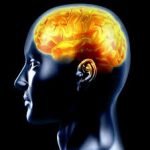Category: Health

By Tracy Suzanne Cummings, MD
Chief of Child and Adolescent Psychiatry
If you have ever been a passenger on an airplane, you have heard the directive to don your own oxygen mask first before attempting to help someone else with theirs. Perhaps as February’s decorative hearts and cupids fill our visual fields, we can consider how this is true for our actual hearts and self-worth, particularly for the younger members of our population. After all, adolescence is a time of self-discovery and identification. Let us encourage teens to build and strengthen a relationship with themselves, thereby preparing them for the challenges of the complex tapestry that we call love. Building up the self-esteem and self-worth in our youth will bring about numerous long-lasting, positive changes that Cupid’s arrow could only dream of creating.
Self-esteem can be defined as the confidence in one’s own worth or abilities. It often includes self-respect and compassion. Once we are able to believe in our worth (which is vast and unique, and exists for everyone), we can better accept and give respect and compassion to those with whom we have relationships, from friendships to romance. Without it, a person might sacrifice themselves to gain the approval of others, only to find later the disappointment in that superficial, unhealthy pattern. Unfortunately, most health classes will not cover relationships in their curriculum, and, naturally, teens will get their information from observing others and asking peers. They might seek social media likes and attention, rather than true connection, keeping face instead of keeping true to one’s essence. While they may long for roses, candy hearts, and chocolates, we need instead to attempt to instill the desire for an arrow pointing them to their own passions and skills. Recent data suggests that over 90% of thirteen to seventeen year-olds go online daily, with over 70% using more than one social media site (American Academy of Child and Adolescent Psychiatry). If only we could have confidence that those sites and online interactions would lead to affirmation!

So, here is where trusted adults can step in and make an impact, by modeling caring relationships and self-compassion. By doing so, we highlight their strengths and capabilities without social comparisons, teaching them to value their personal gifts now so they may be able to share them with a partner later. Helping a teen find their path to success might involve trial and error (it’s ok to not know right away what you want in life), adjusting expectations (self-imposed or otherwise), and creating the context in which wins can happen. While self-esteem and worth begin to be formed in childhood, improvements can be attained at all stages of life by working on the following:
* Insisting on equality and mutual respect in a relationships
* Setting appropriate boundaries
* Verbalizing needs
* Accepting feedback (perhaps even in the form of conflict)
* Acknowledging the possibility of failure, while trying to seek success
* Maintaining assertiveness
* Releasing the pressure of achieving the unattainable goal of perfection (in yourself and others)
If Cupid was really in the business of creating fulfilling and lasting relationships, we would see his arrows pointing towards boosting self-esteem. Besides, who needs a special day to have chocolate anyway?
















 Danielle J. Johnson, MD, FAPA Lindner Center of HOPE, Chief Medical Officer
Danielle J. Johnson, MD, FAPA Lindner Center of HOPE, Chief Medical Officer